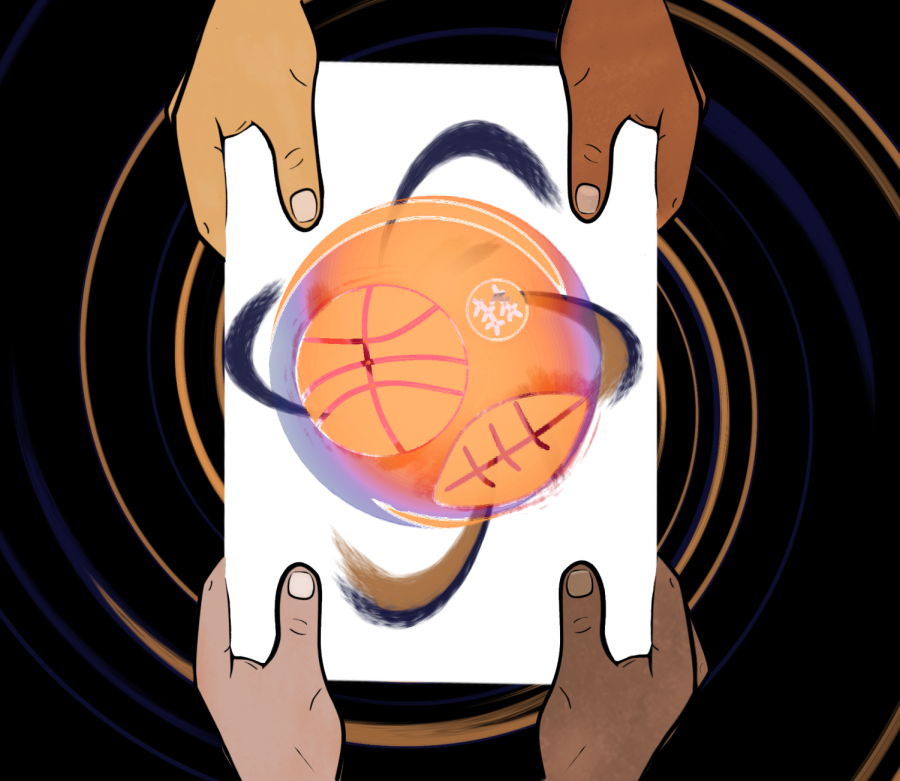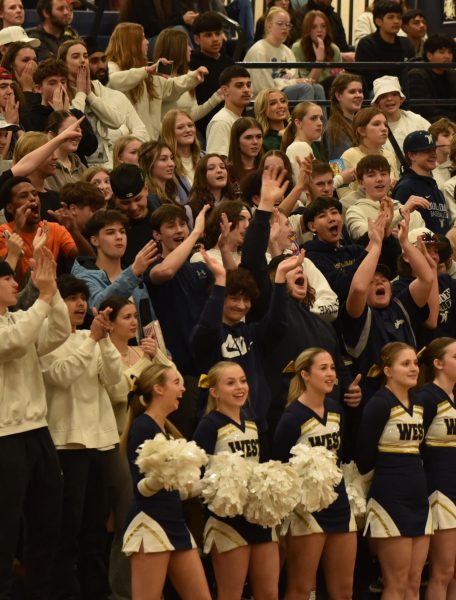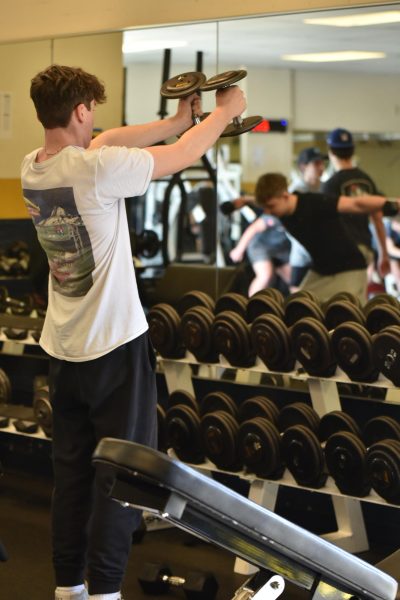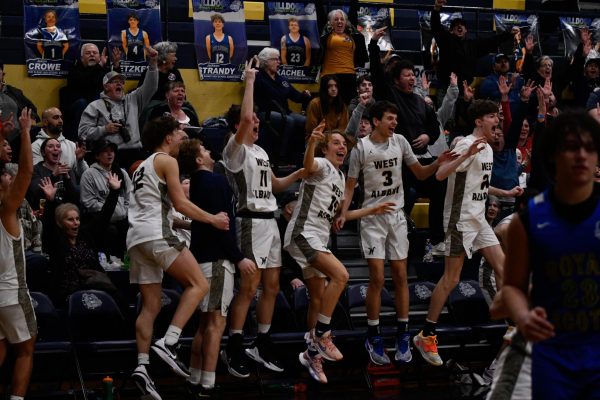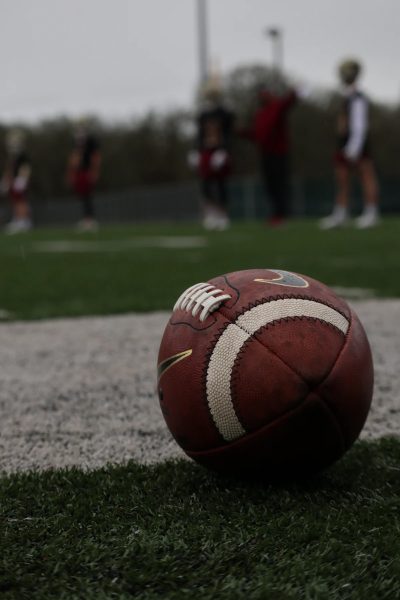Pressures Of Color
How can being a person of color affect an athlete in their sport?
It’s hard to not compare sometimes, “In the back of my mind, I just heard that voice which keeps saying, the fastest man in the world is black, and people are gonna expect you to be fast because you’re black,” track and field senior Rahima Monahan said.
It’s one of the first things an individual notices about another person, the color of their skin. Though society has come a long way racially in comparison to the past, stigmas still persevere in the modern age. With athletes coming in all shades, when they are on the field, track or court, all eyes can be on them and those stigmas can pop up along with preconceived notions about that person’s abilities and belonging in the sport. Stereotypes are pushed onto athletes, and the pressure of color forms.
There are people who feel this pressure does not exist, and therefore, is not really that big of an influence within sports. “We don’t focus on our races when we’re playing. We focus on how good we are,” sophomore Jada Cavazos-Ang said. “It doesn’t have anything to do with our skin… People don’t really focus on that. So they’re more invested in the sport itself than anything else.”. Cavaszos-Ang isn’t the only athlete who felt race did no factor into her sport. Junior lacrosse player Choloe Goettl agreed that she and all of her team members are treated equally.
“I feel equal compared to everybody else on my team… [Our coach] is all inclusive. She definitely treats everybody the same, no matter what you identify as or what your race is” Goettl said. In some situations, athletes of color can be in a sports environment where they feel no different than the other players when it comes to how they are treated, feeling as though their coaches treat them the same as any other athlete.
There is also believed by some athletes that there is pressure when it comes to the relationship between race and sports. Shai Bravo, a junior soccer player, believes that pressure can come from trying to be a good representative of your race. She believed that there was a need to inspire others of a certain race by being a good role model, trying to show that they can rise to being a great player in the sport they loved.
“In representation you don’t see as much as you would hope at the international levels,” Bravo said. “My siblings used to play sports here and when I was growing up, I was like, ´Oh my gosh, they’re really good at soccer,´ so I’m hoping to be like [them].” Bravo compared inspiring other individuals in sports as an athlete with characters such as Disney princesses and their racial representation. “The more you see, the more you feel like you are a part of that.”
Racial pressure can be a persistent trait within athletics. Even when this is mixed with discriminatory attitudes, some try to just move past it and keep going on. “I try not to focus on that too much because I stress a lot due to wanting to meet expectations. I see a lot of videos on Instagram or on TikTok, I go watch track videos there, and usually, like 95% of the time in those videos, those sprinting videos, the fastest person is a person of color,” Monahan said. She found that kind of expectation was present with other people on her team as well. This has led to statements involving stereotypes. “One of my teammates, he´s a person of color too, he was telling me that other people expected him to be fast because he was black,” Monahan said.
“I feel like I have to perform at a certain level,” sophomore football player Dustin Hagner said. “I have the requirements I have to meet and then, if I meet those requirements, there’s always more added because I’m black.” Hagner said that his teammates have also made racial remarks toward him, making comments on how they expect him to be stronger, faster, and good at sports to a certain point because he’s black.
This stereotyping is not just restricted to practice, but follows athletes onto the field or court as well, making athletes of color feel that the spectators and opposing team see them in a certain way.
Though senior soccer player Lily Ruiz says she has never experienced discrimination, she has witnessed teammates sterotype others. “I’ve heard in soccer the stereotypes that Mexicans are better at soccer,” Ruiz said, explaining that she and her teammates sometimes felt intimidated by opposing teams when they had several Mexican players.
“Since it’s happened so many times, I already have it set in my mind that no matter who I meet, I feel like they’re already judging me,” Hagner said. “If I’m playing against another team, I feel like they already assume the same things that other people already assume.” This kind of ugly presentation can get out of hand and get even more disturbing if it keeps escalating or persisting in sports. Overall stereotyping players and making comments towards them that are racist can evolve into something uncomfortable as it festers.
April of this year is an example of what happens when these kinds of preconceived notions, which allow the pressure of color to fester, are taken to the next level. The Oregonian ran an article describing a basketball game between Gladstone High School and Molalla High School. White Molalla audience members allegedly made racist remarks toward the Gladstone team members, who are mostly black. One team member recounted that “at halftime of the varsity boys game, he noticed his friends were growing concerned about something. When he turned around, he saw a student from Molalla High School with his upper body covered in black paint,” according to the article.
Though West Albany athletes have not experienced the overt racism of the Gladstone incident, many have felt that there are still underlying stereotypes within their environment, which depict a form of discrimination.
“Most teams, you’ll know, are good teams if they don’t care about background,” Bravo said. “They’re not going to treat you differently because teams are all about being together and learning how to know each other well enough to just play with one another.”
Your donation will support the student journalists of West Albany High School. Your contribution will allow us to purchase equipment and cover our annual website hosting costs.


